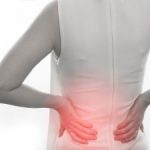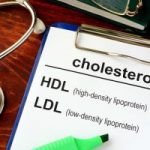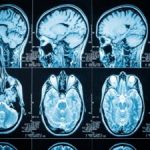 It’s the end of the week, so we put together our weekly health news roundup in case you missed any of our latest stories. This week we discussed nocturnal diarrhea, left flank pain, migraine diet, low cholesterol, vertebrobasilar insufficiency, and hypocholesterolemia.
It’s the end of the week, so we put together our weekly health news roundup in case you missed any of our latest stories. This week we discussed nocturnal diarrhea, left flank pain, migraine diet, low cholesterol, vertebrobasilar insufficiency, and hypocholesterolemia.
You will uncover the symptoms, treatment, and home remedies of nocturnal diarrhea, the causes and treatment of left flank pain, the foods to eat and avoid when it comes to migraines, and the cause of low cholesterol, which can be a serious problem.
What causes nocturnal diarrhea? Symptoms, treatment, and home remedies for nighttime diarrhea
Advertisement
Nocturnal diarrhea is actually nighttime diarrhea that can be the result of a number of different physical or psychological factors. It can be draining since it impacts sleep patterns and can lead to dehydration.
Nocturnal diarrhea is loose, watery, and frequent stool that wakes someone from sleep. Sometimes, the disruption in sleep can further aggravate diarrhea, especially in people who have been diagnosed with conditions such as irritable bowel syndrome (IBS).
There are those who suffer from something called osmotic diarrhea. This is diarrhea that happens when there is too much water drawn into the bowels. When a person drinks too much sugar or salt, it draws water from the body into the bowel and can cause osmotic diarrhea. This could also be diarrhea in the middle of the night.
Having an occasional bout of diarrhea is not unusual, but chronic diarrhea can be a sign of a serious health problem. Chronic diarrhea is defined as diarrhea that lasts for one month or longer. Continue reading…
 Left flank pain: Causes, symptoms, and treatment
Left flank pain: Causes, symptoms, and treatment
Left flank pain refers to the sensation of pain located in the left lower region of the back, in the area below the ribs and above the pelvis. There are a number of different diseases and conditions that can lead to the development of this condition, but any pain located here often brings the health of the kidneys into question, as these flank areas of the body are the normal anatomical position of the kidney’s themselves.
Depending on the cause, left flank pain may be simply mild and nagging, however, other cases may cause severe pain that can even incapacitate the patient. Left flank pain symptoms may also be accompanied by fever, nausea, and vomiting, which suggests more serious underlying conditions.
The following are just some of the most common causes of left flank pain. Continue reading…
 Migraine diet: Foods to eat and avoid for migraine attacks
Migraine diet: Foods to eat and avoid for migraine attacks
Migraine attacks can be very difficult to deal with, often leading sufferers to experience severe throbbing headaches as well as nausea, vomiting, and a sensitively to light and sound. However, what most people don’t realize is that the food they eat can significantly influence the onset of these kinds of headaches.
Migraine diets are something many medical professionals will endorse when diagnosing a patient as a chronic migraine sufferer, as many studies have found links between migraines and food.
In this article, we will discuss some of the most common foods that are part of a typical migraine diet plan, as they help prevent and even treat migraine attacks. Additionally, we will go over several foods to avoid, as some food may be migraine triggers. Continue reading…
 What causes low cholesterol? Health risks, symptoms, and treatment of hypocholesterolemia
What causes low cholesterol? Health risks, symptoms, and treatment of hypocholesterolemia
Low cholesterol or hypocholesterolemia is something we don’t hear a lot about. Cholesterol, of course, is that fatty substance that can clog arteries and lead to heart attack or stroke when levels are high; however, low cholesterol can also be a health hazard.
When cholesterol levels are high, it can interfere with blood flow, causing a heart attack or stroke. If cholesterol levels are low, then other conditions such as cancer and depression can become a problem.
Understanding cholesterol and how it can impact the human body is important if you want to protect your health. For instance, cholesterol is a substance that the body actually needs. It plays a vital role in making certain hormones and making some of the substances that we need to digest food, but LDL is “bad” cholesterol, as it clogs our arteries. While lowering “bad” cholesterol is a good idea, having hypocholesterolemia (too low) can be concerning. Keep in mind that HDL is “good” cholesterol. It helps remove LDL from the body. Continue reading…

What is the prevalence of vertebrobasilar insufficiency? Causes, types, symptoms, and treatment
Advertisement
Your brain needs blood to function, so when blood flow becomes restricted, problems can arise. One condition known as vertebrobasilar insufficiency refers to reduced blood flow to the back of the brain. Blood travels to the back of the brain through two vertebral arteries, which are joined by the basilar artery.
Blockage of these arteries can occur over time as a result of atherosclerosis – build up of plaque. Plaque deposits can occur from cholesterol, calcium, or other cellular components. Arteries not only become hard, but they become thicker and narrow, which restricts blood flow.
The vertebrobasilar arteries carry oxygen and glucose to the part of the brain responsible for consciousness, vision, coordination, balance, and other essential functions for daily life. When blood flow is restricted, it can have very serious consequences on brain cells. For example, a person with vertebrobasilar insufficiency has a higher risk of a mini-stroke, which results in temporary stoppage of brain function. If brain function is permanently lost, then a full-blown stroke occurs. Continue reading…
